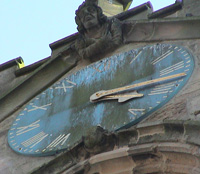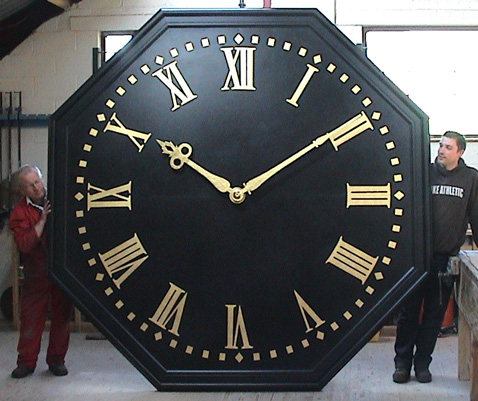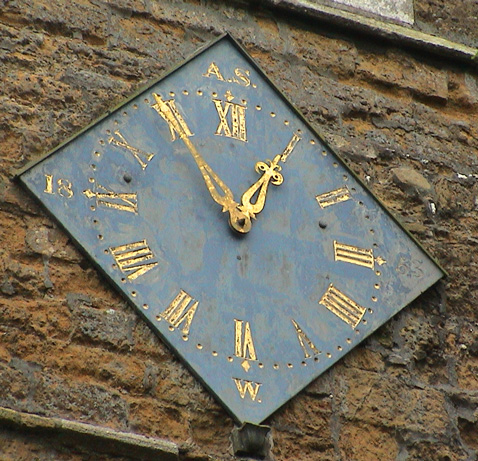





Restoration and manufacture of dials is a major part of the Cumbria Clock Company work, much of which can be undertaken using rope access equipment, thereby avoiding the cost of scaffolding.


It is preferred to remove the dial from the church and transport it back to the workshops. This ensures that the surface of the dial, be it copper, cast-iron or wood can be properly prepared, before being painted to approved and recognised standards, and then re-gilded using 23 ¾ double thickness English gold leaf.
Where necessary new dials can be manufactured using traditional methods and materials such as the 9ft octagonal dial from Wingham, Kent.

In the case of the large slate dials at Caistor, Lincolnshire, it was decided to restore the dials onsite using rope access equipment.


Where necessary skeleton dials can be glazed using traditional, opal glass or if preferred, acrylic.
At the same time as undertaking the redecoration it is strongly advised that the dial motion works (the gearing behind the dial) are dismantled and cleaned. It is only when the hands have been removed, that a full inspection and service can be undertaken.
When the dials are returned to site they are always put back into position using stainless steel fixings.